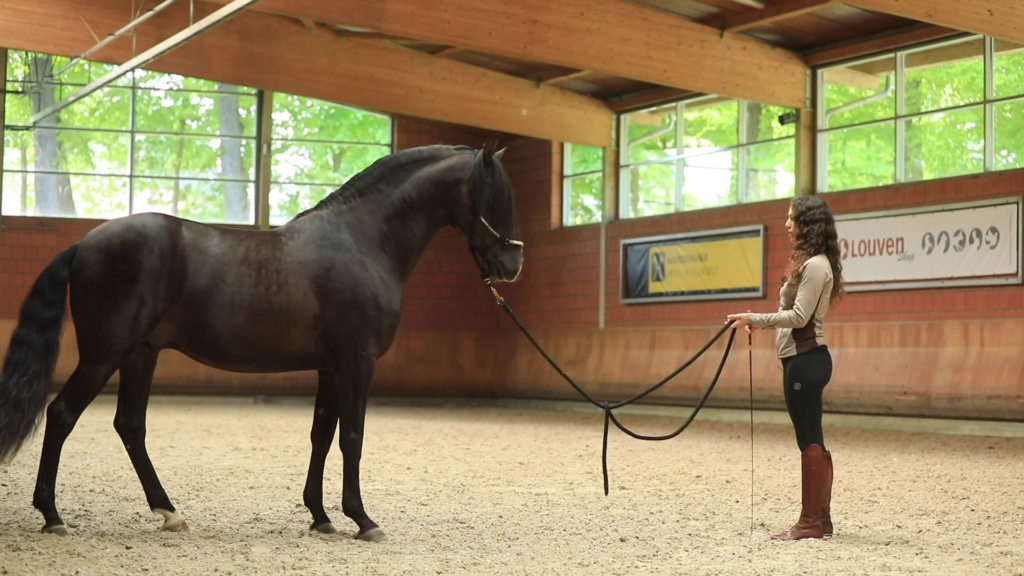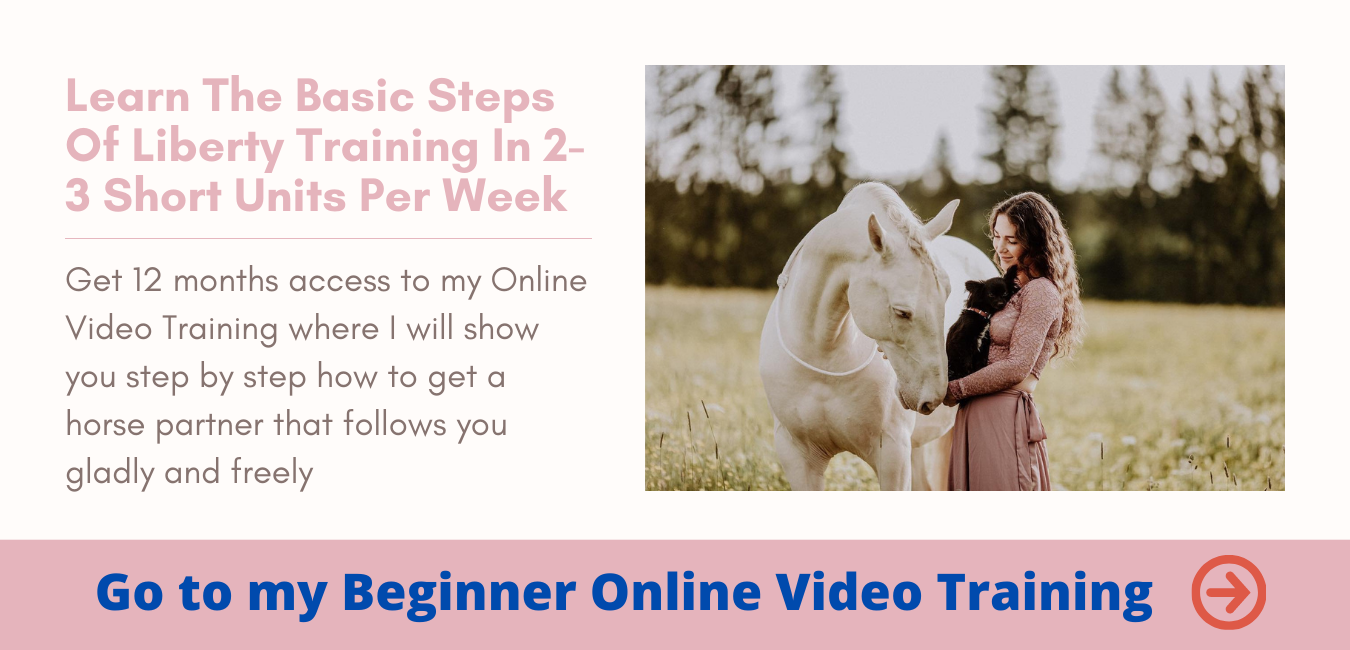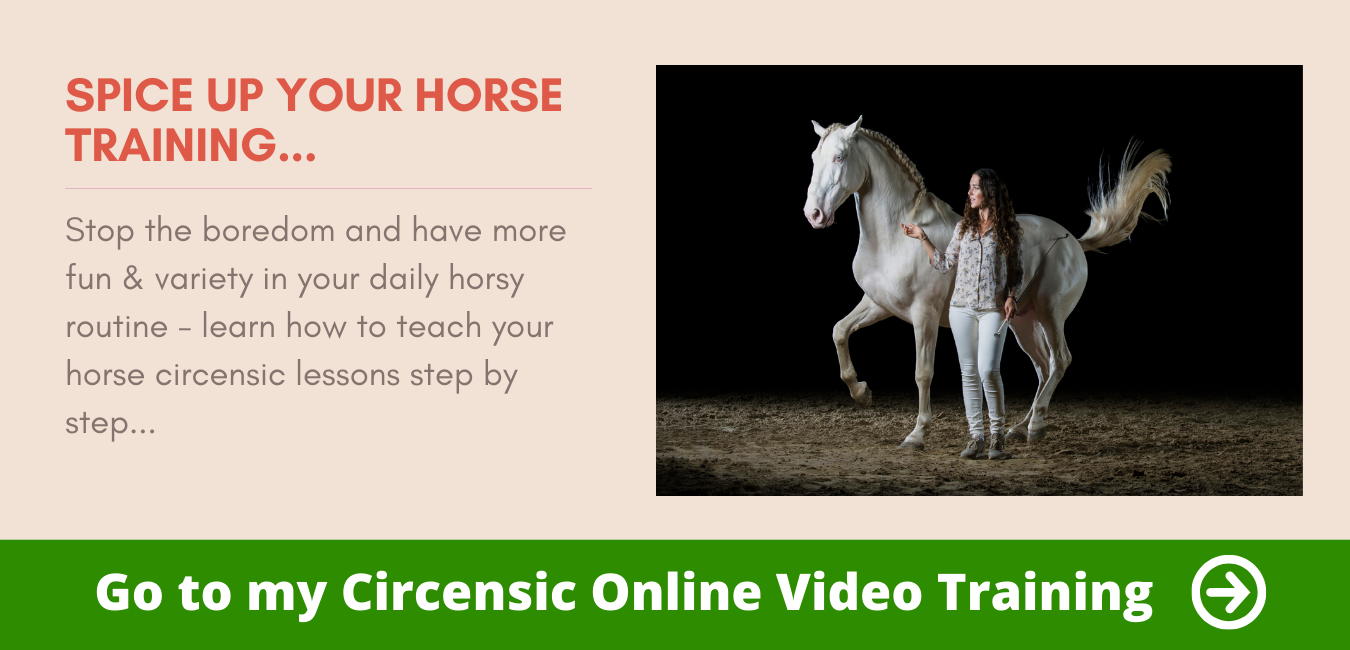Today I would like to talk with you intensively about going backwards.
Boring exercise, you may think?
Absolutely not – because there is a lot more in the few steps “backwards”!
Backwards as punishment
The most “discredited” is probably the backward sending, because in some people’ s mind it is used as punishment when the horse has made a mistake or has been inattentive.
Often you can see a hard hand impact and knocking thighs – and a horse that simply “shoots backwards” humbly.
THIS is not the way backwards should look!
Because it can also be a great and above all gymnastic exercise. I therefore strongly advise against using backwards as a punishment!
Apart from the fact that this is a correction that the horse only rarely really understands, I believe that a certain direction of movement should never be associated with an uncomfortable feeling for the horse.
Furthermore, the tension in “punishment” leads to the fact that any gymnastic effect of backward pointing is eliminated – and thus actually “degrades” this exercise to a pure end in itself: Punishment.
The correct walking backwards
But how should a beautiful “backwards”, gymnastic for the horse, look like now?
First of all, it is important to know that a horse, as in a trot, simultaneously walks backwards with the diagonal pairs of legs. So if the left front leg steps back, the right hind leg is taken at the same time.
The horse really has to learn this sequence of movements first, because it is completely irrational for a horse to walk backwards – at least more than 1-2 steps.
In the wild it would always turn around instead of walking backwards if possible. So walking backwards over several steps requires real training!
A correct backward should look like a “correct forward” in the end – no matter if you practice on the ground or under the saddle. This means that the horse should stand at the aids. And willingly follow them.
For ground work this means that you don’t have to wave the crop wildly to make your horse kick backwards. It doesn’t pull up its head and doesn’t “shoot back” – but walks more or less released or gathered backwards.
The kicks should be smooth and flowing. So it should not stall or even stop again and again! Our aim is to make the horse walk backwards smoothly over several steps until we stop it again.
How to work on walking backwards from the ground
If you now want to send your horse back from the ground, it is best to position yourself frontally in front of your horse at the beginning.
Make sure that there is at least an arm’s length distance between you and your horse’s head – so that he has time to react before you touch him.
Especially for the first steps backwards it helps if you place your horse at the railing of the indoor riding arena or the fence around your place or paddock to give him some orientation.
Because we remember: going backwards is not logical for a horse!
In order to encourage your horse to step backwards, straighten up and bring tension into your body. You shift your weight forward and if in doubt, take a step towards your horse.
This is often enough for sensitive horses, but I also try to use the crop to incorporate a visual signal so that I don’t have to move to send my horse back in the long run.
To do this I take the crop upwards and swing it from left to right.
If your horse shows even the slightest reaction the first time, you let the crop sink and relax your body – and praise him for the right reaction.
Make sure from the very beginning that it avoids as little as possible, but runs straight back.
If your horse likes to break to the left or right, for example, so that he doesn’t have to take so much weight on his hindquarters and bend his hands, you can also stand at the height of your horse’s head and make sure that your horse walks straight back with the rail on one side and your crop as an extended arm on the other side.
If you also use a cavesson in this position, you can control the direction of your horse’s hindquarters even better by the action on the nose.
Of course, you can also “install” a touching point which teaches your horse to move backwards. Very popular are points on the nose or chest of the horse.
Make sure that you don’t put too much pressure on the horse when you touch it (and of course also otherwise). Especially at the nose your horse can get head-shy otherwise!
As always: As much as necessary, but as little as possible! Allow your horse enough time to understand what you want from him.
[su_youtube url=”https://youtu.be/U1QvpcLSSpo”]
The walking backwards under the saddle
Of course, walking backwards under the saddle is also a useful exercise where you can see how “permeable” and willing your horse is to your aids.
The most important thing is that you do not try to “pull” your horse backwards with the reins.
Apart from the fact that if you use your hands too much, the legs will not really come off diagonally, this has nothing to do with permeability.
Rather, riding backwards should feel like riding forwards – only in the opposite direction.
At the beginning you let your horse stop and stand still. Make sure you distribute your weight evenly over both ischial tuberosities and don’t sit too tense.
Then shift your weight forward on your thigh. Do not lean forward too obviously!
Now you are floating carefully with both calves. When your horse wants to go forward, you gently hold the connection on the reins.
If your horse swerves his head downwards, give a little slack and keep the driving help on his leg.
Of course it helps you for the first attempts in the saddle if you have already established a voice command on the ground, which you can now use additionally.
Then it is of course easier for your horse to understand what you want from him 🙂 .
The fact is, pointing backwards is a really underestimated exercise!
And I like to use it in my gymnastic training, because it is always a check how well my horse reacts to my aids.
In addition, this lesson teaches him to really take weight on his hindquarters and to bend his hands – and thus supports my goal of making it as comfortable and health-friendly as possible for my horse to carry my weight.
In this sense, have fun walking backwards!
All my love,
Your Kenzie
PS: Also for you, walking backwards in floor work (e.g. when shouldering) is a good coordination exercise. You can really feel how you have to move your back and legs to go backwards as smoothly as possible. Then it will certainly be easier for you to see – and “feel” – this with your horse.




